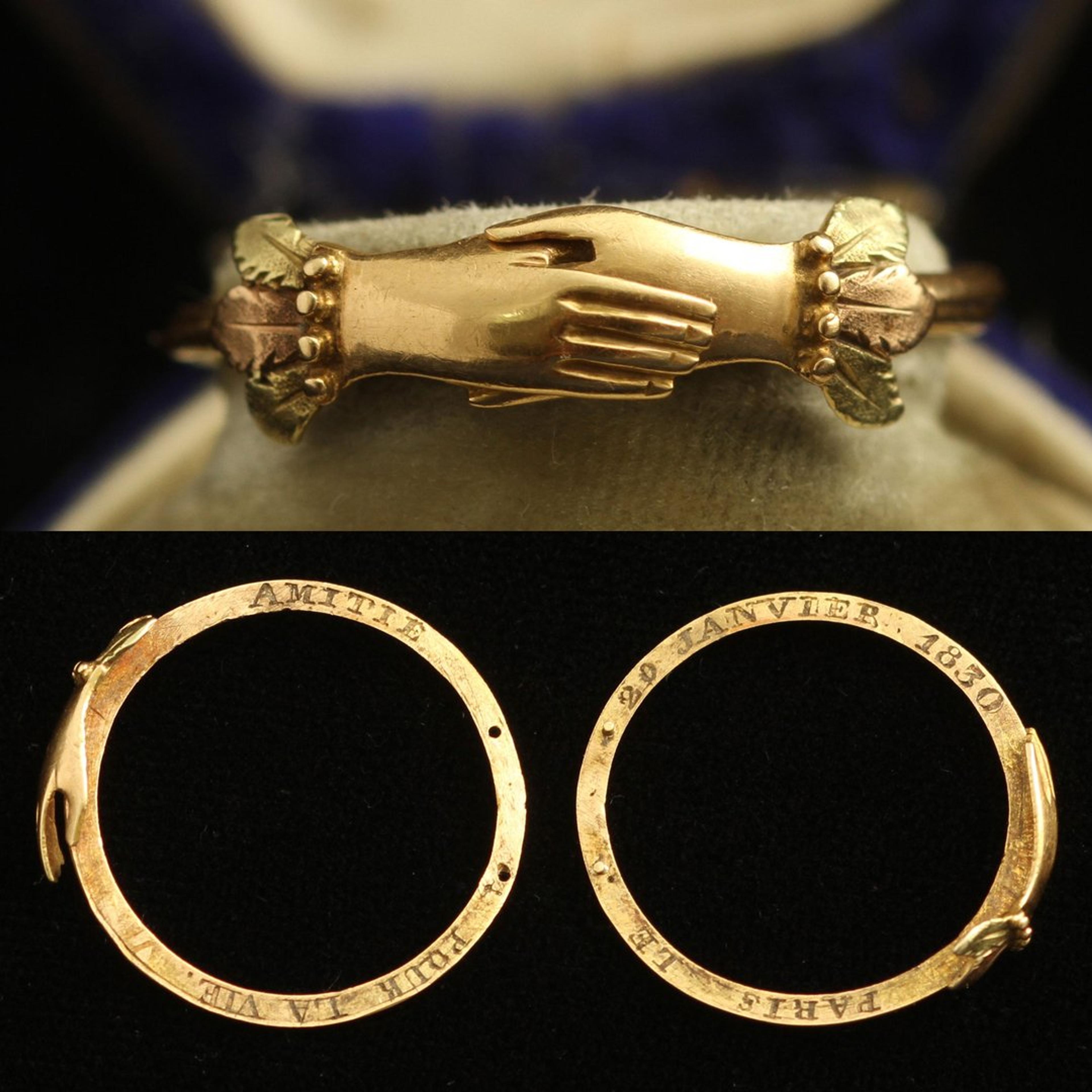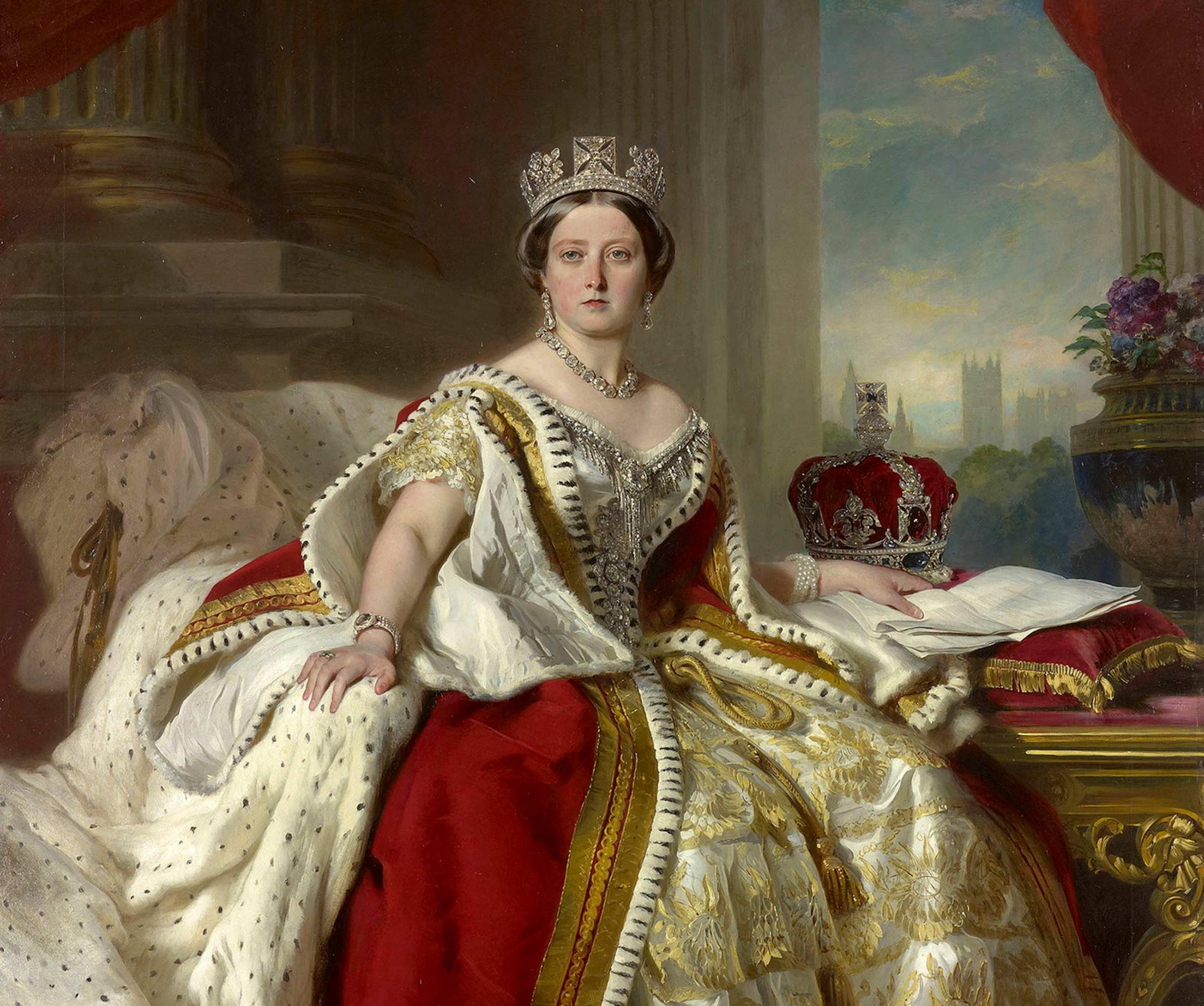
The symbol of two clasped hands is an ancient, sentimental design that has historically been associated with fidelity and marriage. Interlocking "Fede" rings (from the Italian, for "trust" or "fidelity") or "Gimmel" rings (meaning "twin") were often used as betrothal tokens in 16th and 17th century Europe, but they remained popular until well after the Renaissance. Two or three bands are riveted together by a tiny pin (or in this case two pegs) that allow the separate components to come together as one - a tidy symbol of the union of two people.This remarkable 18k yellow gold ring features two beautifully rendered hands with petaled cuffs in rose and green gold. The engravings on the interior of the hoops read: "Amitie Pour La Vie" and "Paris Le 20 Januier 1830". This very rare and very special ring is a size 8.25 and cannot be resized.
thedetails
- Materials
18k tri-color gold
- Age
Engraved for 1830
- Condition
Excellent - French owl hallmark
- Size
8.25, cannot be resized; 4.1mm x 17.5mm head, 1.3mm hoop
Need more photos?
Send us an email to request photos of this piece on a model.

Aboutthe
VictorianEra
1837 — 1901
The Victorians were avid consumers and novelty-seekers, especially when it came to fashion, and numerous fads came and went throughout the 19th century. In jewelry, whatever fashion choices Queen V. made reverberated throughout the kingdom. The Romantic period reflected the queen’s legendary love for her husband, Albert.
Jewelry from this period featured joyful designs like flowers, hearts, and birds, all which often had symbolic meaning. The queen’s betrothal ring was made in the shape of a snake, which stood for love, fidelity, and eternity. The exuberant tone shifted after Prince Albert passed away in 1861, marking the beginning of the Grand Period. Black jewelry became de rigeur as the Queen and her subjects entered “mourning,” which at the time represented not just an emotional state, as we conceive of it today, but a specific manner of conduct and dress. She wore the color black for the remainder of her life, and we see lots of black onyx, enamel, jet, and gutta percha in the jewelry from this time. Finally, during the late Victorian period, which transitioned along with a rapidly changing world into the “Aesthetic Movement”, there was a return to organic and whimsical motifs: serpents, crescent moons, animals, and Japonaisserie designed for the more liberated “Gibson Girl”. During the second half of the 19th century, America entered the global jewelry market, with Tiffany and Co. leading the way. Lapidaries continued to perfect their techniques, and the old European cut emerged toward the end of the Victorian period. The discovery of rich diamond mines in South Africa made the colorless stones more accessible than ever before.